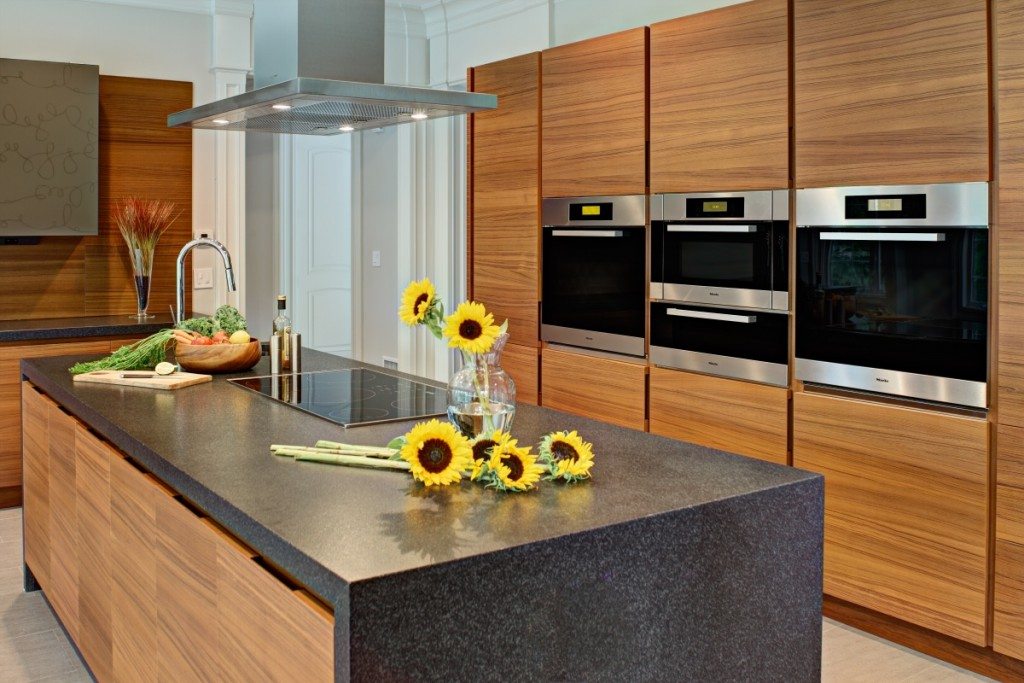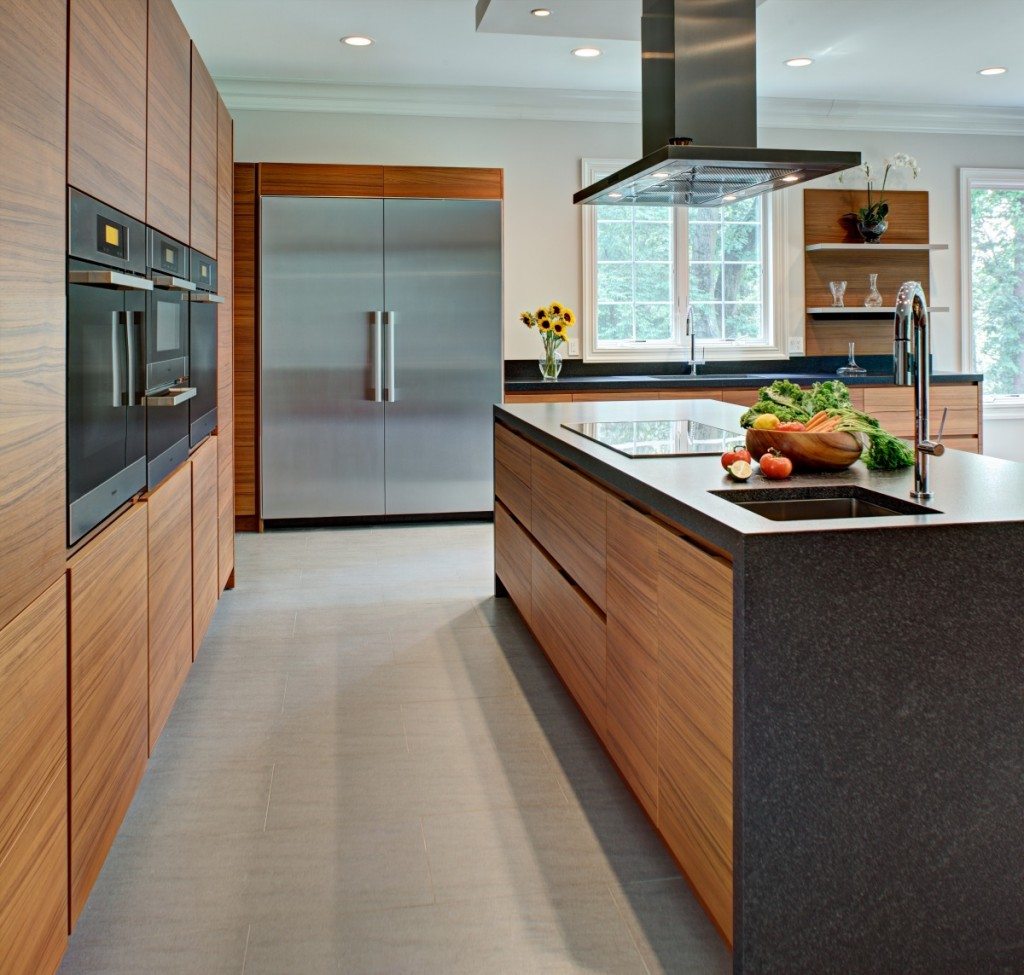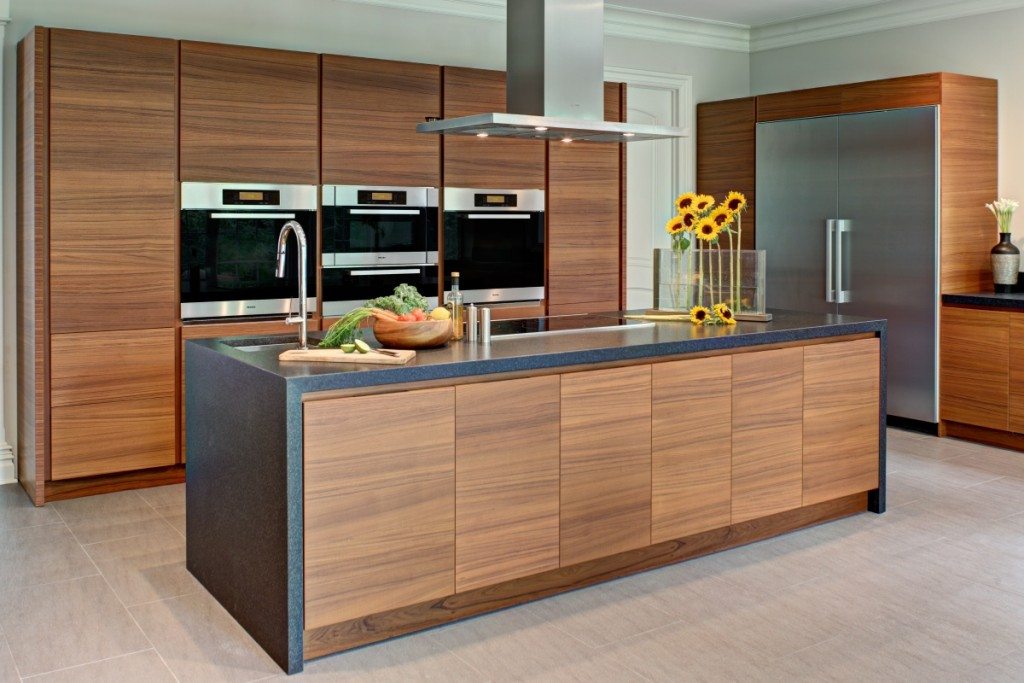A-Frame: an a-frame is framework shaped like an “A” that is used to transport countertops on a truck.
Accents: a decorative element that is added for detail
Apron Front Sink: A large sink that has an apron on the front. This type of sink sits in a short cabinet.
Backsplash: Tiles or another waterproof material that offers a guard between water and other liquids and the wall of a kitchen. Typically situated over the countertop.
Bugholes: small holes within the concrete that were created by trapped air in the concrete
Bullnosing: When a finished edge is added to a man-made or unfinished tile, it is called “bullnosing”. This process is done for cosmetic reasons but it also protects the edge from chipping or cracking.

C-Clamps: A C-clamp holds an object into place while it is being sawed or joined.
Cabinet Scraper: A rectangular piece of steel that has been rounded into a hook. It is used to remove shavings and to bring the finish to a high gloss without damaging the wood of a kitchen cabinet.
Cabinetmaker’s Screwdriver: A tool used by cabinet makers and American as well as European kitchen designers that has a wood handle and a blade specifically designed for wood screws.
Caesarstone: a man-made stone that is considered extremely durable due to its scratch and stain resistance. It is harder than natural stone.
Carpenter’s Glue: Glue that is used to bond wooden objects to one another. Heat and moisture resistant.
Casting Table: A table that has been designed for casting concrete.
Cooktop: Stove burners that are situated within a countertop.
Drain Board: Depressions that are worked into a countertop to allow water to drain from the countertop into the sink.
Drop-In Sink: A sink that has a rim that goes over the countertop.
Formica Stone: A nonporous quartz surface that is natural and has low maintenance needs.

Granite: A durable countertop material that uses natural rock. Considered elegant due to its price and appearance.
Grout: A paste of cement that is used to fill in bug holes.
Integral Sink: A sink that is made out of the same materials that the countertop is constructed of, and is an invaluable addition to a luxury kitchen.
Marble: A natural stone that is both rare and expensive. Often used in countertops.
Melamine: A smooth plastic that covers a particle board interior. Often used on countertops. Considered inexpensive.
Post-Form: When the laminate is fitted around a pre-shaped substrate in order to form a countertop, the process of doing so is referred to as “post-form”.

Pyrolave: Enameled lava rock that is used as a countertop material.
Quartz: A countertop material that is made of rock. It requires very little maintenance.
Undermount Sink: A sink that is situated beneath a countertop.
Urethane: A type of sealer that provides temperature, weather, and scratch resistance.
Wax: Can be used to protect countertops temporarily.
Wet Polishing: A method for polishing concrete countertops that uses water throughout the process so as to eliminate dust.
Wooden Countertops: Also referred to as a butcher block, a countertop surface that is made out of wood. You can read more about countertops in our high-end kitchen blog.
